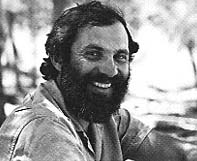
BAR, Jr., a feature of particular interest to young people and to neophytes in Biblical archaeology, is premiered in this issue of BAR. In our first BAR, Jr., Oded Borowski tells us “How to Tell a Tell.” In future issues, other professionals as well as laypeople will relate personal archaeological experiences and will guide the beginner in the basics of the subject. Oded Borowski was born and raised on a kibbutz in Israel. There he not only raised sheep, grew field crops and cared for orchards but also participated in survey and salvage archaeological excavations. Dr. Borowski, who received his Ph.D. in Near Eastern Studies from the University of Michigan, has dug at Tell Gezer, Tell Dan and the Lahav Research Project (Tell Halif). Now director of the Modern Hebrew Program at Emory University, Borowski lives in Atlanta with his wife, Marcia, and two sons, Jonathan and Orly.

Featured in this issue is an article that is both extraordinarily informative and stunningly beautiful. “New Light on the Nabataeans,” describing the rose-red city of Petra by excavator Philip Hammond, also brings a distinguished new author to BAR readers. Hammond is not only director of Petra excavations, he is also the author of A History of the Nabataeans: Studies in Mediterranean Archaeology (Lund, 1975) and Petra, the Excavation of the Main Theater (Quaritsch, London, 1966). As the author of two other books, 62 articles and 33 book reviews, Dr. Hammond is that rare field archaeologist who writes as frequently as he digs. Hammond has been digging at Petra since 1959. He has been director of the American expedition to Petra since 1961. He also directed the American expedition to Hebron from 1963–66. Previously an Associate Professor of Mediterranean archaeology at Brandeis University and an Assistant Professor of Old Testament at Princeton Theological Seminary, Hammond is currently Professor of anthropology at the University of Utah where he is developing the science of archaeometrics. When asked what his special interests are, Dr. Hammond replied succinctly, “The Nabataeans!”

M. Robert Mulholland’s major review article “The Infancy Narratives in Matthew and Luke—Of History, Theology and Literature” brings BAR readers face to face with Raymond E. Brown’s monumental work of Biblical scholarship, The Birth of the Messiah. A graduate of the U.S. Naval Academy, Mulholland received his Master’s of Sacred Theology from Wesley Theological Seminary and his doctorate from Harvard Divinity School. Dr. Mulholland has worked as a lumberjack, an instructor of Greek, a pastor and is now Assistant Professor of New Testament interpretation at Asbury Theological Seminary in Wilmore, Kentucky. Active in church activities, Mulholland has held rural, recreational, inner-city and suburban pastorates. Married and the father of two, he is also a proficient white-water canoeist and was “once an expert skier (slowed by the years and infrequency of opportunities to ski).”

An avocational expert in numismatics, D. Bernard Hoenig, the author of “The Other Side of the Coin,” is also an attorney and a free-lance journalist. Hoenig, a graduate of Yeshiva University and New York University Law School, has shared a general law practice with his father for 22 years. His serious interest in Judaic numismatics began in 1970 when Hoenig discovered a family heirloom,—a bronze “Holy Shekel” token from the 18th or 19th century. At about the same time, Hoenig received a gift of Israeli commemorative coins which, he says, “opened up … a world of unparalleled numismatic beauty that linked together the modern and ancient worlds of Israel.” The father of five children, Hoenig finds time to jog, bicycle and build model ships.

